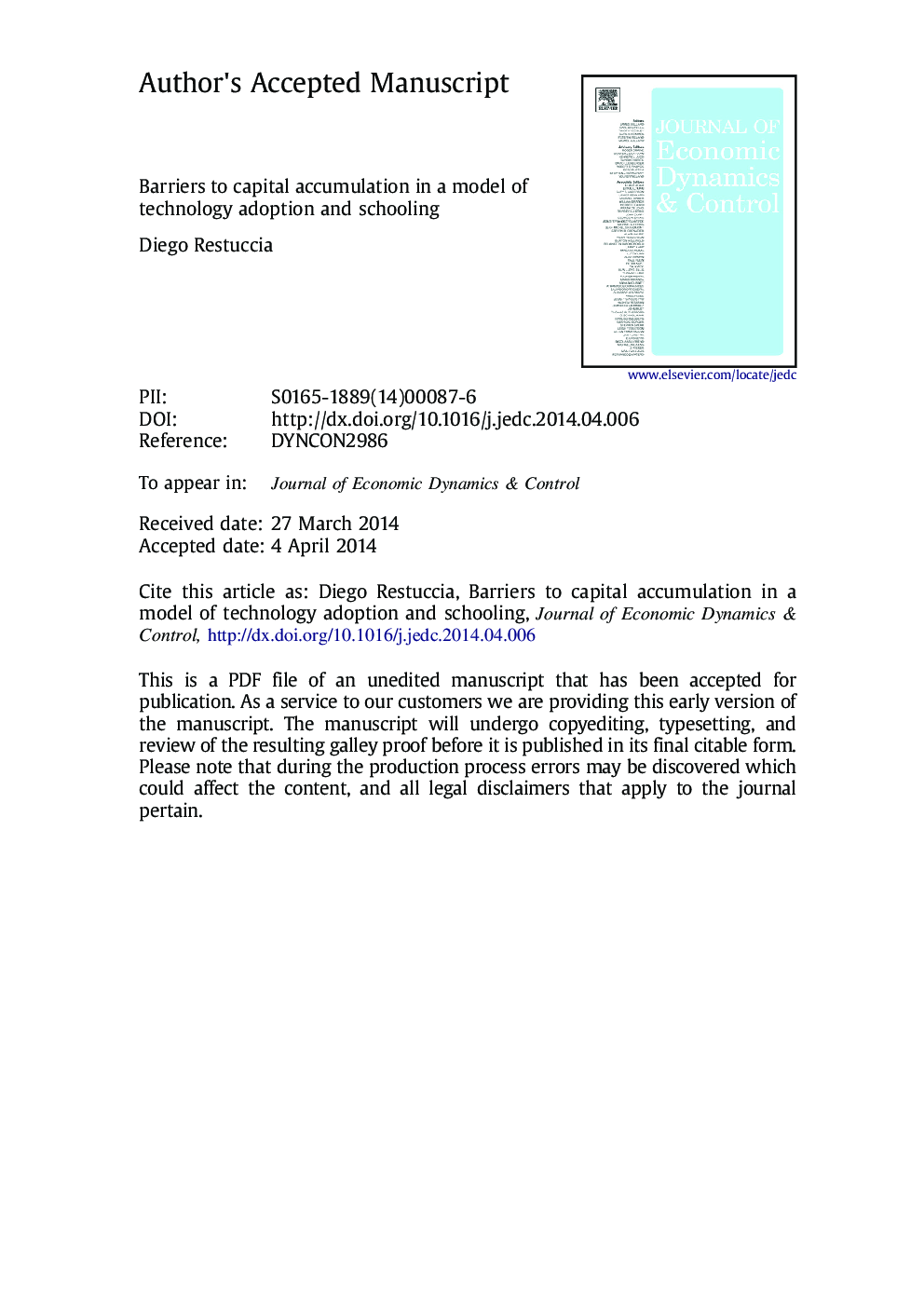| Article ID | Journal | Published Year | Pages | File Type |
|---|---|---|---|---|
| 5098572 | Journal of Economic Dynamics and Control | 2014 | 26 Pages |
Abstract
Standard growth models require large differences in barriers to capital accumulation to reproduce the observed disparities in the wealth of nations. I introduce technology adoption and schooling decisions into a standard growth model and show that the required differences in barriers implied by this model are much smaller. In particular, a calibrated version of the model implies per capita income differences 3 times larger than a standard model. Per capita income differences are amplified by two reinforcing factors: schooling capital differences and aggregate total factor productivity differences. The results suggest caution in the role of factor inputs derived from standard development accounting exercises. A development policy that subsidizes education is not optimal in the presence of barriers to capital accumulation, removing barriers can replicate educational outcomes and generate higher income levels by several orders of magnitude.
Related Topics
Physical Sciences and Engineering
Mathematics
Control and Optimization
Authors
Diego Restuccia,
